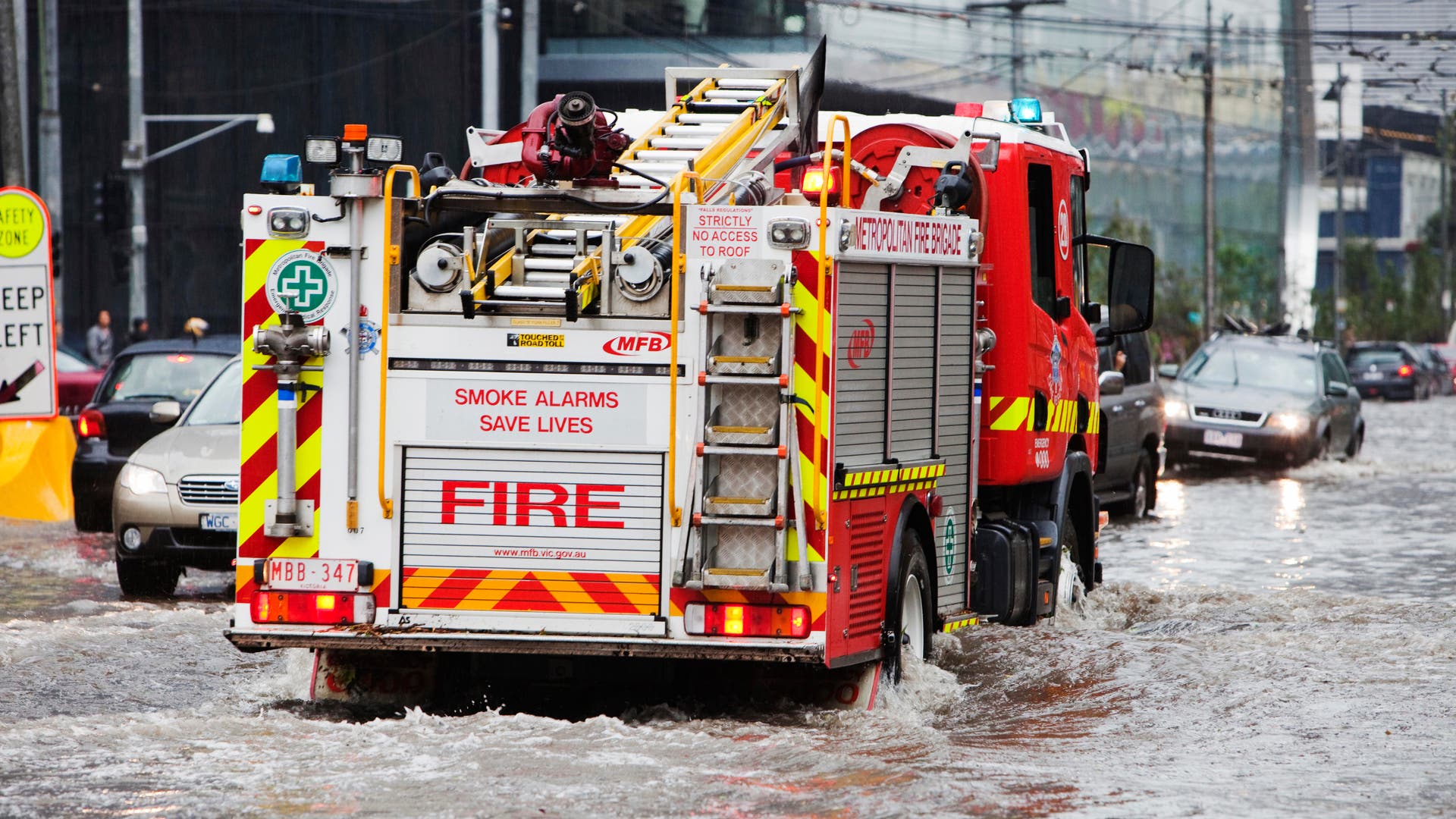However, an increase in water vapor does not only increase the risk of storms. It also makes summer nights uncomfortably humid. Since the mid-1990s, summer nighttime low temperatures have risen more sharply than daily high temperatures over land areas around the world.. This is also due to the greenhouse gas water vapor: the heat that would normally escape from space at night is trapped in the atmosphere, preventing the Earth’s surface from cooling. And unlike carbon dioxide, which spreads around the world no matter where it is released, water vapor initially remains where it is formed.
Increased humidity makes hot nights dangerous to health. Because air contains more water vapor, sweat evaporates less, making it difficult for the body to cool naturally. The result is overheating and sleep disturbances. The measure of these symptoms is the heat index: it describes the combined effect of temperature and humidity and quantifies how much stress the body is actually exposed to. For example, 33 degrees Celsius with 60 percent humidity results in a heat index of 40 degrees Celsius. A temperature index of more than 38 ° C is considered dangerous. Prolonged exposure may be fatal, especially to the elderly and children. Livestock and domestic animals also experience the heat of the night, while wildlife escapes to higher latitudes or higher elevations. Additionally, when it cools less at night, heat can build up in the soil, killing some plants and insects while others—the more warm-loving species—may thrive better. According to a “Declaration on Climate Change and Health” published in August 2021 by 32 US health organizations, nighttime heat also increases the risk of insect-borne diseases.
Hyperthermia hypertrophy reactions
Exposure to high nighttime temperatures is increasing not only in the hot tropics, but also in regions north or south of the equator. In Houston, USA, the average temperature today is more than two degrees Celsius higher than it was in 1970. This is due to the proximity of the Gulf of Mexico, which has become warmer, and the rapid growth of the city, which increases the urban heat and island effect.
This coincides with developments in Germany: the number of “tropical nights” in which the temperature does not fall below 20 ° C has steadily increased since the 1990s. In Hesse, for example, such a warm night was recorded between 1961 and 1990 about every five years. In Frankfurt am Main, the German Weather Service counted eight tropical nights in 2015 and six in 2018 and four nights in 2019. In the future, these conditions are likely to become normal.
However, some tropical countries will suffer more than others – or are already suffering from it. In May 2015, India and Pakistan were hit by a severe heat wave. The daily maximum temperatures there were more than 46 degrees Celsius for several days, and due to the high humidity their temperature could not drop at night. According to the United Nations, about 3,500 people died as a result of this exposure. If global warming increases by another half a degree, The number of people at risk of extreme heat will increase to 500 million worldwideclimate scientists from Rutgers University in the United States estimate in 2020.
© Spectrum of Science (Details)
The three vibrational modes of the hydrogen molecule |
Every molecule in the atmosphere that absorbs infrared radiation acts as a greenhouse gas: it stores energy radiated from the Earth in the form of molecular vibrations. As a result, it does not escape into space, but remains in the atmosphere, which causes its temperature to rise.
During molecular vibration, either the bond angles or bond lengths change periodically – as if the atoms were balls held together by springs. The center of gravity of the molecule always remains the same, so it does not move in one direction due to vibration. Each type of vibration (one speaks of modes of vibration) requires a specific amount of energy to be stimulated, i.e. radiation of a corresponding wavelength.
A water molecule has three vibrational modes (right, white: hydrogen, red: oxygen): if the bond angle of the molecule changes, this is referred to as H–O–H distortion vibration (above). In the symmetric O – H stretch (middle), the bonds between the two hydrogen atoms are synchronously lengthened and shortened. In contrast, the lengths of these bonds always change in opposite directions in the asymmetric O–H stretch (bottom).
While carbon dioxide gets the most attention in the context of global warming, water vapor is by far the most important greenhouse gas in the atmosphere. It absorbs more infrared radiation emitted from the Earth’s surface than other greenhouse gases, and thus traps more heat. But that’s not all, because warmer air can hold more water—and thus water vapor content increases with temperature—it amplifies any rise in temperature caused by carbon dioxide or other greenhouse gases. To illustrate the order of magnitude: doubling the concentration of carbon dioxide in the atmosphere would, taken alone, heat the Earth by about one degree Celsius. However, due to the feedback, the temperature rise is twice as high. However, other reactions, such as diminishing sea ice, are receiving the most attention. The water vapor feedback loop—warming leads to evaporation, and trapping heat that causes further warming—is the strongest in the climate system.

“Alcohol buff. Troublemaker. Introvert. Student. Social media lover. Web ninja. Bacon fan. Reader.”






More Stories
Bumblebee is dying: Researchers are worried | Life and knowledge
Minister and great biochemist: Hans Tobey is dead
Dwarf Dragon – Spectrum Science